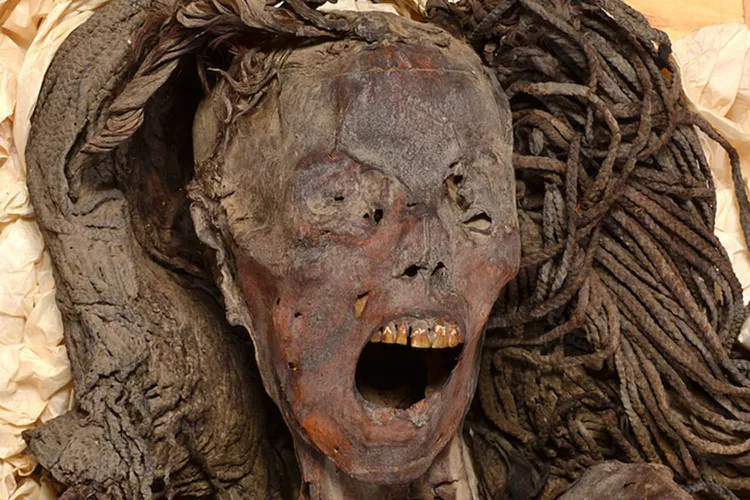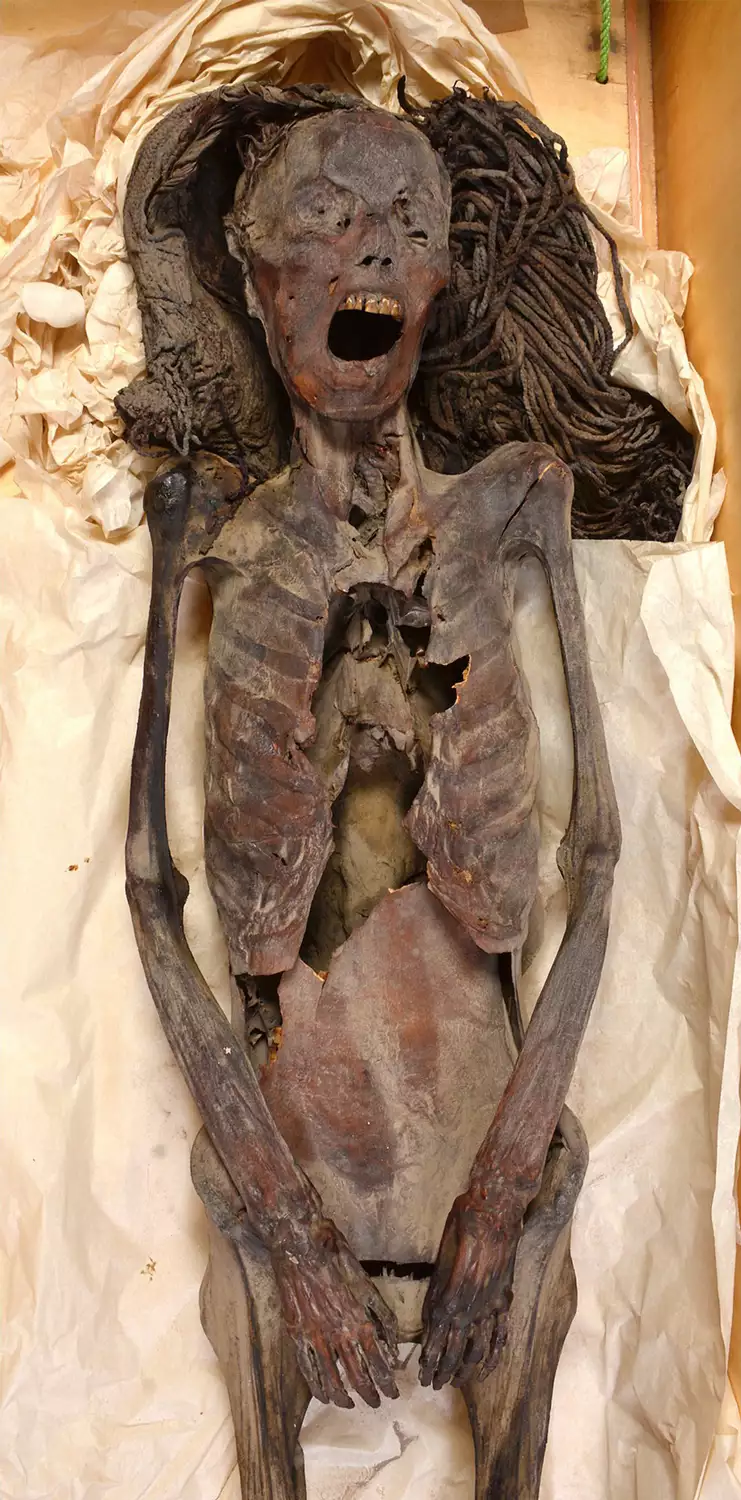The enigmatic “Screaming Mummy” of ancient Egypt has intrigued archaeologists and the public alike for decades. Discovered in 1935 at the Deir el-Bahari site near Luxor, this mummified woman, known as the ancient ‘Screaming Mummy’ of Egypt, is famous for her haunting, open-mouthed expression. Initially, experts believed that this unusual appearance was the result of a flawed mummification process. However, a groundbreaking new study published in the journal Frontiers in Medicine challenges this theory, suggesting that the Screaming Mummy may have died in excruciating pain.

Discovery and Initial Theories of the Ancient ‘Screaming Mummy’ of Egypt
The ancient ‘Screaming Mummy’ of Egypt, also referred to as the “Screaming Woman,” was unearthed from a cache of royal mummies. Her terrifying expression led researchers to speculate that it might have been caused by improper mummification techniques, which allowed her jaw to drop open after death. This explanation seemed plausible at the time, given that the quality of mummification varied across different periods of ancient Egyptian history.
New Findings from Advanced CT Scans
Recent advancements in technology have enabled researchers to conduct detailed CT scans on the ancient ‘Screaming Mummy’ of Egypt, uncovering crucial details that had previously gone unnoticed. One of the most significant discoveries was the presence of expensive imported embalming materials. This finding indicates that the woman was likely of high social status, as these materials were rarely used in ancient Egypt. The use of such high-quality materials contradicts the initial theory of poor mummification, suggesting a more complex narrative.
The Role of Cadaveric Spasm in the Ancient ‘Screaming Mummy’ of Egypt
Sahar Saleem, a radiology professor at Cairo University and the study’s lead researcher, proposed that the woman’s unsettling expression might be attributed to “cadaveric spasm.” This rare condition occurs when a person dies suddenly under extreme stress or pain, causing their muscles to contract and stiffen. As a result, the deceased’s facial expression and body posture can become “frozen” in their final moments. In the case of the ancient ‘Screaming Mummy’ of Egypt, this could mean that she died in severe agony, her mouth locked in a scream that has endured through the millennia.

Unanswered Questions and Ongoing Mystery
Despite these new insights, many questions about the ancient ‘Screaming Mummy’ of Egypt remain unanswered. The exact cause of her death and the circumstances leading up to it are still unknown. The absence of historical records or context makes it difficult for researchers to draw definitive conclusions. Saleem noted, “We do not know the history or circumstances surrounding her death. It remains a mystery.” This statement underscores the complexities and limitations of studying ancient remains.
Debunking Myths: Was the Ancient ‘Screaming Mummy’ of Egypt Embalmed Alive?
One of the more sensational theories speculated that the woman might have been embalmed while still alive. However, Saleem and her team found no evidence to support this claim. “I don’t believe that this is possible,” Saleem stated, dismissing the notion as inconsistent with known Egyptian burial practices. Ancient Egyptians highly valued the preservation of the dead, making it unlikely that such a practice would have occurred.
The Importance of Modern Technology in Archaeology
The use of advanced CT scanning technology has been pivotal in this study, offering a fresh perspective on a long-standing mystery. These technological advancements enable researchers to explore ancient remains non-invasively, preserving them for future study while uncovering new information. This case highlights the importance of continually revisiting and re-examining archaeological findings as new methods and technologies become available.
Conclusion
The story of the ancient ‘Screaming Mummy’ of Egypt is far from complete, but each new discovery brings us closer to understanding her life and death. The recent study challenges earlier assumptions and opens up new avenues for research, proving that even well-known archaeological artifacts can still surprise us. As scientists continue to investigate, the Screaming Mummy remains a compelling subject, capturing the imagination of all who seek to unravel the mysteries of the past.
For more information on mummification and other ancient Egyptian practices, visit our ancient Egyptian history page. To explore more about recent archaeological discoveries, check out our latest articles. For further reading, refer to Frontiers in Medicine’s journal and National Library of Medicine’s article.




